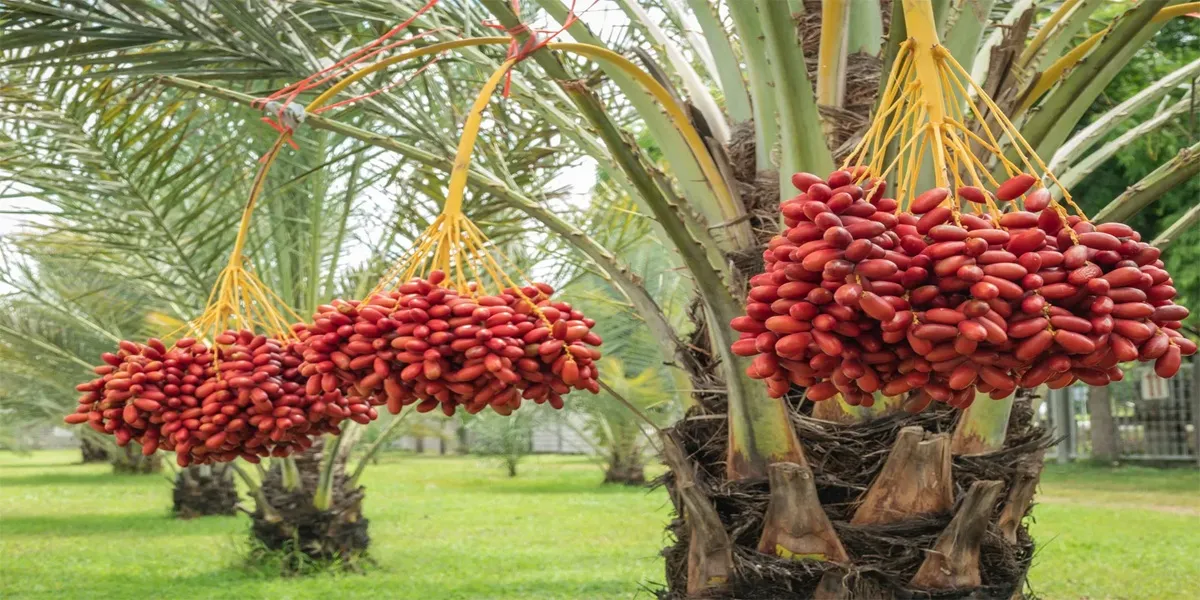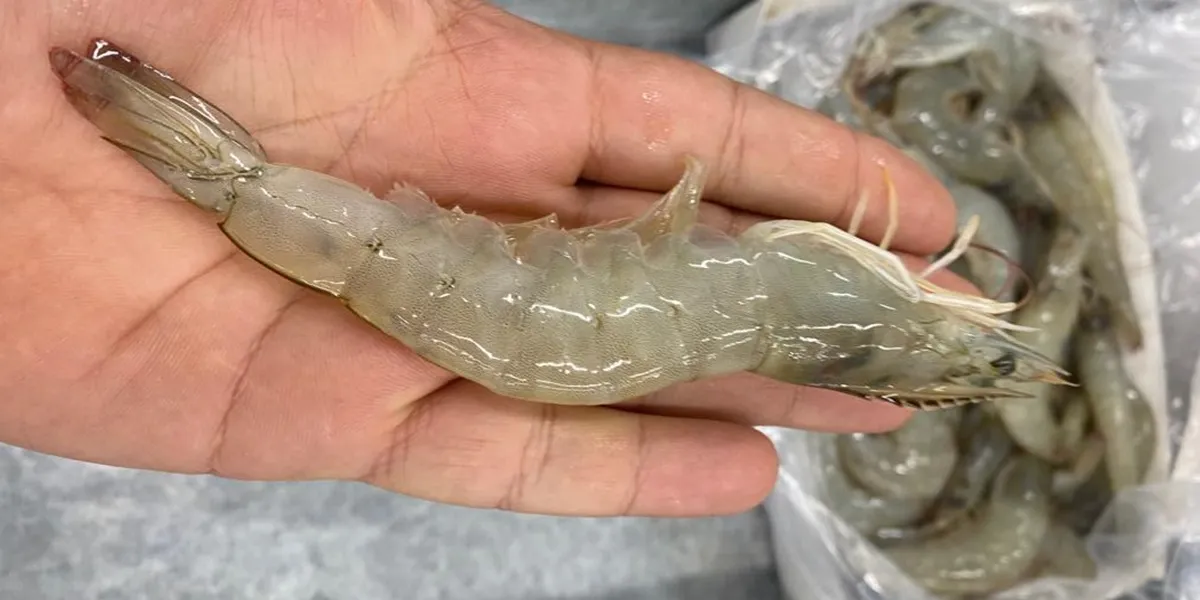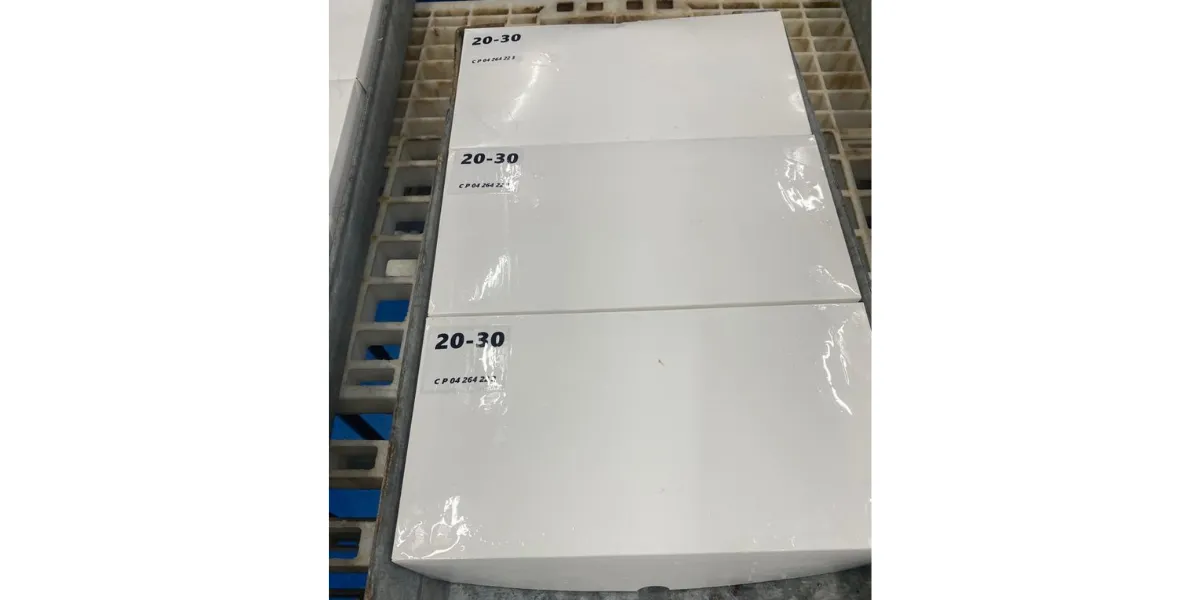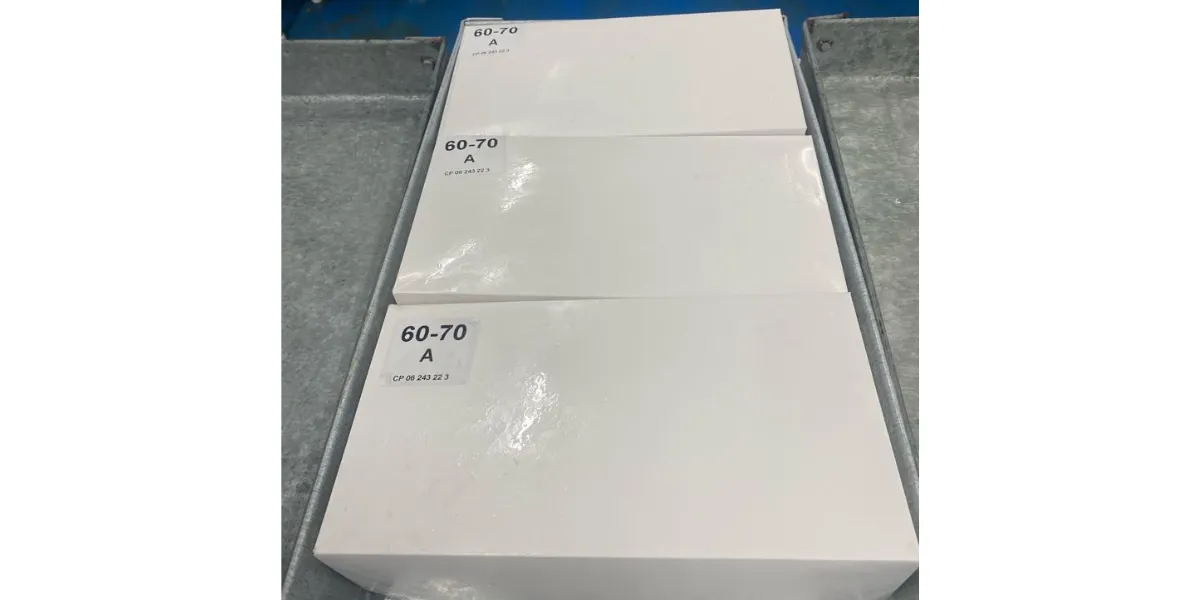In the heart of scorching deserts and sun-soaked valleys, one tree has stood tall for millennia — the Date Palm (Phoenix dactylifera). More than just a source of fruit, this remarkable tree is a symbol of resilience, nourishment, and sustainable agriculture. Revered in ancient texts and vital to modern food systems, the date palm is the silent powerhouse behind the production of one of the world’s most nutrient-dense superfruits: the date.
Each variety of this tree tells its own story. From the rich, caramel tones of Medjool to the honey-soft bite of Barhi, the diversity among date palm cultivars is staggering. But there’s more than just taste — the nutritional profile of dates rivals many popular health foods, delivering fiber, minerals, and potent antioxidants in every bite. Understanding the tree behind the fruit unlocks a deeper appreciation for this desert gem.
If you’re looking to explore the different types of date palms, their unique benefits, and the science behind their cultivation — stay with us. This article offers an expert dive into the world of date palm trees and how they power premium date production across the globe.
Introduction: Why the Date Palm Tree Still Matters in the 21st Century
The date palm tree is not just an ancient agricultural staple — it’s a living solution for modern sustainability. In a time of climate instability, soil degradation, and nutritional deficiencies, this desert-adapted species continues to deliver value across multiple domains. Its deep-rooted history stretches back thousands of years, yet its role in 21st-century food systems is more relevant than ever.
With minimal water requirements and exceptional tolerance to heat, the date palm tree is a model crop for arid and semi-arid regions. Countries across the Middle East, North Africa, and parts of the Americas rely on it for food security and economic resilience. But beyond its environmental adaptability lies its nutritional power. The Health benefits of dates — the fruit of the date palm — include high fiber, essential minerals like potassium and magnesium, natural sugars for energy, and antioxidant compounds that combat inflammation and oxidative stress.
Moreover, dates require minimal post-harvest processing, making them an ideal whole food. Their long shelf life and versatility in culinary uses—from energy bars to traditional sweets—further enhance their global appeal. As consumer interest in plant-based, functional foods grows, dates and their origin trees are stepping into the spotlight once more.
Whether you’re a grower, food scientist, or health-conscious consumer, understanding the importance of the date palm tree offers insight into one of the world’s most resilient agricultural systems. The date palm is not just surviving the 21st century — it’s thriving, and it’s helping us thrive too.
Anatomy of the Date Palm: Understanding the Tree That Feeds Millions
To appreciate the value of the date palm tree, one must understand its anatomy. This perennial monocotyledon, Phoenix dactylifera, is engineered by nature to survive in harsh environments while producing high-energy fruit. Unlike many fruit trees, the date palm has a single, unbranched trunk covered in old leaf bases that protect it from physical damage and heat stress.
At the top of the trunk lies the crown, consisting of up to 150 feather-like leaves, each up to 6 meters long. These leaves not only photosynthesize efficiently but also provide shade to the trunk and reduce transpiration. The tree’s vascular system enables rapid water and nutrient transport, crucial for surviving high temperatures and low rainfall.
The root system is another marvel — it grows shallow but wide, spreading laterally in search of water. This makes drip irrigation and soil surface enrichment highly effective. Inside the crown, female and male inflorescences form, which must be managed carefully for optimal pollination.
Understanding this structure is especially important when comparing cultivars. For example, Iranian dates vs Medjool dates not only differ in taste and texture but also in crown structure, fruit clustering, and harvesting techniques. Medjool palms tend to have looser clusters and softer fruit, requiring gentler handling. Iranian palms, like the Zahedi, are more robust and drought-resistant.
Recognizing these biological features allows growers to implement better propagation, pruning, and harvesting strategies. The anatomy of the date palm is not just botanical trivia — it is the foundation for high-yield, sustainable, and profitable farming. Knowing the tree means knowing how to maximize its potential.
Climate Requirements: What Makes the Date Palm Thrive?
The date palm thrives in climates where most crops fail. Its natural habitat is defined by extremes — long, hot summers, low rainfall, and intense sunlight. These stressors, which would destroy many temperate crops, are exactly what the date palm needs to flourish.
Ideal growing conditions for the date palm include:
• Temperature: Requires sustained highs of 35–45°C for proper fruit development.
• Humidity: Performs best in dry air; high humidity can cause fungal issues during fruit ripening.
• Rainfall: Sensitive to rain during flowering and fruit development. Minimal annual rainfall is preferred.
• Sunlight: Needs full sun for at least 10–12 hours daily.
The palm’s resilience is what makes it so valued across the Middle East, parts of Africa, and southwestern U.S. These areas often experience water scarcity, and the date palm’s ability to survive on brackish or saline water gives it a major advantage.
For example, Iranian Dates are cultivated in regions like Bam and Kerman, where temperatures soar above 40°C, and rainfall is negligible. Yet the trees not only survive — they produce some of the world’s most prized fruits. The secret lies in the date palm’s physiology: waxy leaves that reduce transpiration, a thick trunk that stores nutrients, and roots that seek out underground moisture.
As climate change shifts global agricultural patterns, crops like the date palm are becoming increasingly important. Their success is not just about tradition — it’s about adaptation and future-ready farming.
Top Cultivars for Premium Date Production: From Medjool to Barhi
Different regions cultivate different date palm varieties based on taste preferences, environmental adaptability, and commercial goals. Each cultivar offers distinct characteristics in terms of flavor, texture, yield, and storage life — making cultivar selection a vital decision for growers and marketers.
Among the most renowned are:
• Medjool: Often called the “king of dates,” Medjool is prized for its large size, soft flesh, and rich, caramel-like taste. It requires careful handling due to its moisture content and fetches premium prices on global markets.
• Barhi: A delicate variety with a honey-like flavor, Barhi is unique in that it is often consumed at the Khalal (fresh/yellow) stage. It’s more perishable but highly sought-after by fresh fruit enthusiasts.
• Deglet Noor: Semi-dry and with a firm texture, this variety is preferred in North Africa and the U.S. for commercial processing and snacking.
• Mazafati: A soft, dark variety grown in Iran, particularly in Bam. It’s known for high sugar content and smooth texture.
Understanding Iranian date varieties is essential for anyone working in the export market. For instance, Zahidi is a dry variety suitable for storage, while Piarom is semi-dry with an elongated shape and intense sweetness. Each has a different harvest time and handling requirement.
Selecting the right cultivar requires considering the target market, local climate, and intended use (fresh, dried, processed). The diversity among date cultivars is not just botanical — it is a strategic advantage for any producer looking to serve global markets efficiently.

Propagation Techniques: How Experts Reproduce High-Quality Palms
The propagation of date palm trees is a highly specialized process, and it plays a key role in ensuring uniform quality, disease resistance, and high-yield fruit production. Farmers and agricultural scientists use two primary propagation methods: offshoot propagation and tissue culture, each with distinct advantages.
Offshoot propagation is the traditional and most reliable method. Mature palms produce offshoots or “pups” near the base of the trunk, which are genetic clones of the mother plant. These offshoots are removed once they reach sufficient size and root mass and are replanted to develop into new palms. This method preserves the desired traits—fruit quality, yield, and disease resistance—making it ideal for expanding orchards with known performance characteristics.
However, offshoots are limited in number and timing, which makes tissue culture an appealing alternative, especially in commercial-scale farming. This laboratory technique involves micro-propagation from shoot tips or meristematic tissue under sterile conditions. It allows for mass production of disease-free, genetically uniform trees in a short time. Though costly, it’s especially valuable for preserving rare or high-demand varieties such as Medjool or Piarom.
Yet, not all cultivars respond equally well to tissue culture, and managing somaclonal variation (undesired mutations) is a known challenge. As such, scientists are refining hormone treatments and growth media formulations to improve success rates.
In summary, propagation is more than just planting — it’s a science of replication and control. Combining traditional techniques with modern biotechnology ensures growers can scale production of high-quality palms without compromising genetic integrity or productivity. Sustainable propagation directly influences global supply, making it a core element of premium date production.
Irrigation & Soil Management: Science-Based Strategies for Maximum Yield
Irrigation and soil management are critical pillars of successful date palm cultivation, especially in arid climates where water resources are limited and soil salinity is a constant threat. To maximize yield and fruit quality, growers must implement data-driven irrigation methods and tailor their soil nutrition practices precisely.
Drip irrigation has emerged as the gold standard in modern date farming. By delivering water directly to the root zone, it reduces evaporation loss and ensures deep soil penetration. This technique not only conserves water but also prevents fungal issues related to over-watering. Sensors integrated with smart irrigation systems can now adjust watering schedules based on real-time soil moisture, temperature, and humidity.
Soil composition also plays a decisive role. Date palms prefer sandy-loam soils with good drainage and a slightly alkaline pH (7.5–8.5). However, many plantations grow on marginal lands. To counteract poor fertility or salinity, farmers apply organic matter (like compost or green manure) and specific micronutrients such as zinc, boron, and magnesium. Gypsum is commonly used to reduce soil sodium levels and improve structure.
Advanced practices include:
• Periodic leaching to flush out accumulated salts.
• Cover cropping to reduce erosion and boost microbial activity.
• Biofertilizers and mycorrhizal inoculants to improve nutrient uptake naturally.
In regions like the Middle East and North Africa, government-backed research has shown a direct link between precise water-soil strategies and up to 30% increases in yield. For date farmers, this means more marketable fruit, higher export value, and lower environmental impact.
Adopting these science-based strategies doesn’t just support productivity — it ensures the long-term sustainability of date palm ecosystems amid climate uncertainty.
Pollination Techniques: Why Artificial Pollination Is the Industry Standard
Date palm trees are dioecious, meaning male and female flowers grow on separate trees. For successful fruit production, pollen from male trees must reach the female flowers—making pollination a crucial intervention point. In nature, this process is wind-dependent and unpredictable. In commercial farming, artificial pollination is now the industry standard for ensuring high fruit set and uniform quality.
There are two primary methods of artificial pollination:
• Manual pollination: Workers collect pollen from male flowers and directly dust it onto female inflorescences. Though labor-intensive, it ensures maximum control over timing and quantity, especially valuable for premium varieties like Medjool or Piarom.
• Mechanical pollination: Tools like air blowers or motorized sprayers are used to distribute pollen more efficiently across large farms. This method reduces labor costs and enables large-scale consistency but requires careful calibration to avoid over- or under-pollination.
Research shows that optimal pollination occurs within 3–5 days after female spathe opening. Delays can result in poor fruit set and lower yields. Additionally, growers often prune male flowers and store pollen under controlled conditions for year-round availability, extending the pollination window.
Advanced farms use pollen viability tests and monitor flowering phenology to synchronize male and female bloom cycles more effectively. Some also explore genetic optimization to breed female palms with longer receptivity or less dependence on labor-intensive pollination.
Artificial pollination ensures not just quantity, but quality. It enables the production of evenly ripened, high-sugar-content fruit critical for premium export markets. In short, without artificial pollination, large-scale date farming as we know it would not be possible.
Growth Timeline: From Plantation to First Harvest
The journey of a date palm from planting to its first harvest is a testament to patience and meticulous care. Typically, it takes about 4 to 8 years for a date palm to begin producing fruit, with commercial yields often achieved around the 10-year mark. 
Year 1-3: Establishment Phase
After planting, the young palm focuses on root development and establishing a strong trunk. During this period, it’s crucial to ensure optimal irrigation and protection from pests.
Year 4-6: Juvenile Phase
The palm starts to develop a more robust canopy and may produce a limited number of fruits. However, these early fruits are often removed to allow the tree to focus energy on growth.
Year 7-10: Maturity and First Harvest
By this stage, the palm reaches maturity and begins to produce significant yields. Proper pollination techniques, whether manual or mechanical, become essential to ensure fruit set.
Understanding this timeline is vital for growers to plan resources, labor, and market strategies effectively.
Harvesting Methods: When and How to Pick for Maximum Sugar Content
Harvesting dates at the right time is crucial to ensure maximum sugar content and optimal flavor. Dates go through several ripening stages: Kimri (unripe), Khalal (full-size, crunchy), Rutab (ripe, soft), and Tamar (fully ripe, sun-dried).
Optimal Harvest Time
The Tamar stage is ideal for harvesting as the dates have the highest sugar concentration, ranging from 65% to 80% on a dry weight basis. Harvesting during this stage ensures the fruit’s sweetness and extends shelf life. 
Harvesting Techniques
• Manual Harvesting: Workers climb the palms or use lifts to handpick the dates, ensuring minimal damage.
• Mechanical Harvesting: Machines shake the palm to dislodge ripe dates, which are then collected on nets or tarps.
Post-harvest, dates are sorted, cleaned, and dried to achieve the desired moisture content, ensuring quality and longevity. 
Post-Harvest Handling: How to Preserve Flavor, Texture, and Safety
Proper post-harvest handling is essential to maintain the quality and safety of dates. Once harvested, dates undergo several processes:
Cleaning and Sorting
Dates are cleaned to remove dust, debris, and any contaminants. They are then sorted based on size, color, and ripeness.
Drying
Drying reduces the moisture content to around 20%, inhibiting microbial growth and extending shelf life. This can be achieved through sun drying or controlled dehydration methods.
Packaging and Storage
Dates are packed in moisture-proof containers to prevent rehydration. Storage at temperatures between 0°C to 4°C helps maintain quality and prevent spoilage.
Implementing these practices ensures that consumers receive dates that are flavorful, safe, and of the highest quality.
Global Market Trends: Who’s Buying Premium Dates and Why?
The global demand for premium dates has been on the rise, driven by health-conscious consumers seeking natural sweeteners and nutritious snacks. Markets in North America, Europe, and Asia have shown significant growth.
Health and Wellness Trends
Dates are rich in fiber, antioxidants, and essential minerals, making them a preferred choice for health enthusiasts. Their natural sweetness offers an alternative to refined sugars. 
Culinary Uses
Beyond snacking, dates are increasingly used in energy bars, desserts, and as sweeteners in various recipes, expanding their market reach.
E-commerce Expansion
Online platforms have made premium dates more accessible to global consumers, allowing producers to tap into new markets and demographics.
These trends highlight the growing appreciation for dates as both a health food and a versatile culinary ingredient.
Challenges in Date Palm Farming: From Red Palm Weevil to Climate Shifts
Date palm cultivation faces several challenges that threaten yield and quality:
Red Palm Weevil (RPW)
This invasive pest burrows into the palm trunk, causing structural damage and potentially killing the tree. Early detection and integrated pest management strategies are crucial to control its spread.
Climate Change
Rising temperatures, unpredictable rainfall, and increased salinity in soil and water sources affect date palm health and productivity. Developing climate-resilient cultivars and adopting sustainable farming practices are essential responses.
Addressing these challenges requires a combination of traditional knowledge and modern agricultural techniques to ensure the sustainability of date palm farming.
Sustainability Practices in Date Palm Agriculture: Future-Proofing the Industry
Sustainable date palm farming integrates environmental stewardship with economic viability:
Water Conservation
Implementing drip irrigation systems reduces water usage and minimizes waste.
Organic Farming
Avoiding synthetic fertilizers and pesticides promotes soil health and biodiversity.
Agroforestry
Integrating date palms with other crops enhances land use efficiency and ecological balance.
These practices not only protect the environment but also ensure long-term productivity and profitability for farmers.
Smart Farming for Date Palms: How AI and IoT Are Transforming the Sector
The integration of Artificial Intelligence (AI) and the Internet of Things (IoT) is revolutionizing date palm agriculture:
Precision Agriculture
Sensors monitor soil moisture, nutrient levels, and weather conditions, enabling data-driven decisions for irrigation and fertilization.
Pest Detection
AI-powered systems can detect early signs of pest infestations, such as the Red Palm Weevil, allowing for timely interventions. 
Yield Prediction
Machine learning models analyze historical data to forecast yields, assisting in market planning and resource allocation.
Adopting these technologies enhances efficiency, reduces waste, and increases profitability in date palm farming.
Conclusion: The Date Palm Tree as a Model for Resilient Agriculture
The date palm tree exemplifies resilience and adaptability, thriving in arid environments and providing nutritious fruit with minimal resources. Its cultivation integrates traditional practices with modern innovations, offering lessons in sustainable agriculture.
By embracing sustainable methods and technological advancements, date palm farming can continue to flourish, contributing to food security and economic development in challenging climates.
Conclusion Heading: The Date Palm Tree — A Legacy Rooted in Strength and Science
Conclusion: Why the Date Palm Will Continue to Shape the Future of Sustainable Nutrition
The date palm tree is far more than a historical crop — it is a strategic ally in the fight for global food security, desert agriculture, and nutrient-rich diets. Its ability to thrive in arid environments with minimal water, combined with the dense nutritional value of its fruit, makes it a model of efficiency in agriculture.
As we continue to explore natural solutions for resilient food systems, the date palm offers critical insights. From its impressive range of cultivars to its scientifically backed health properties, this tree embodies the harmony between tradition and innovation.
Whether you’re a grower, nutritionist, or simply a curious reader, understanding the backbone of premium date production gives you a richer perspective on one of nature’s most resourceful creations.




